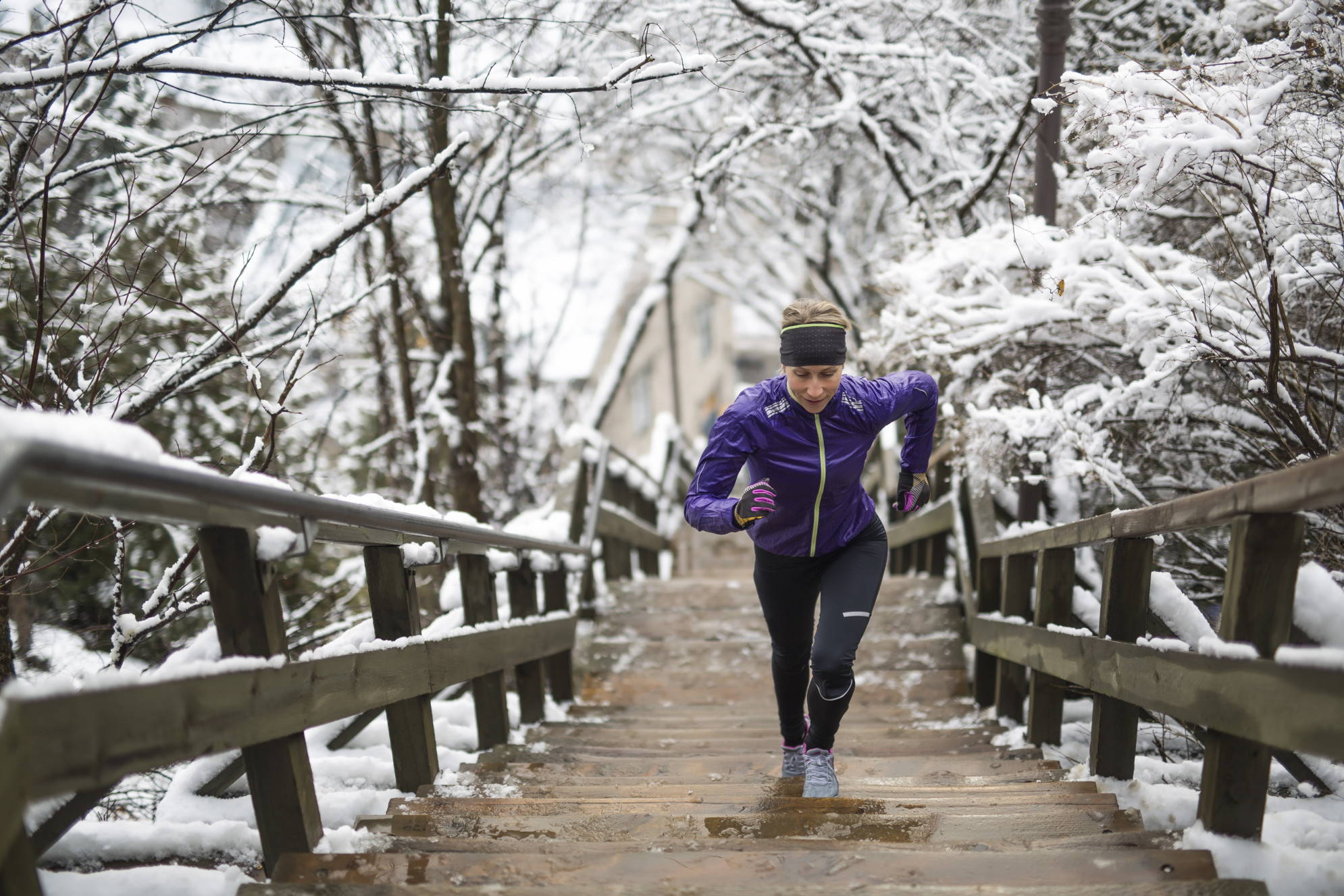Welcome to the Fitness Fire Storyteller series! We asked some of our favorite fitness and running bloggers to share their experiences with us. Today’s story comes from Maggie from Maggie on the Run. She lived in Alaska for a spell, which is why we asked her to give us some tips on running in cold weather—so gather 'round the Fitness Fire and enjoy!
My daughter is obsessed with a certain blonde ice queen right now. I relate to the ice queen’s emotional plight as the eldest on some level, and I have to admit, I’ve spent many a run listening to her songs on repeat. They don’t exactly have the same effect now that I live in Florida, but picture running through the snow while letting it go—what a boost, right?
I much prefer running in cold weather to running in the heat, because—get this—running actually WARMS YOU UP the harder you work. When it’s 110°F outside, like it was several times this summer here in Florida (while I was 8-9 months pregnant, I might add), there’s nothing you can do outdoors short of escaping to a pool to survive, and even the pool feels like bath water at that point. But I digress.
There’s definitely something magical about running on a trail vs. the road in the wintertime, especially in northern climates. Everything is different; the sights, smells, and sounds are transformed so that your well-loved trail looks like a new place. Along with these changes come new challenges. Staying warm and keeping your footing becomes a priority. I learned this first-hand when I began my running journey in Alaska (more on that in My Alaska Run Story).
I am personally more motivated to get out in the cold if I’m running on a beautiful trail, but you do have to take certain precautions, and I wouldn’t recommend trying a trail you’ve never run before if it’s icy or snowy out. Some challenges that you may face in the winter are:
BEING SEEN IN DARK CONDITIONS
Be safe. There’s no shame in my reflection game. I often wore a reflective vest and a headlamp. Granted, we had a lot more darkness up there in the winter than here in the lower 48—we lived in south-central Alaska and only had about 5.5 hours of dim, dusky daylight each day in the height of winter. Even in Florida, though, 4:30 p.m. hits and I want to put on my pajamas. Reflect accordingly with whatever visibility and safety gear works for you!
STAYING WARM AS TEMPERATURES DROP
I read somewhere that you should dress for your run as if it's 10°F warmer out than it actually is, and that piece of advice has been so helpful. Don’t overdress and risk being uncomfortable five minutes in, but do choose your materials wisely and dress in layers.
I love running vests for an extra layer and POCKETS! Also, gloves that allow your fingertips to poke out so you can still unlock your door or use a touch-screen phone are useful. I found back then, though, that my iPhone ceased to function at around 4°F, so keep that in mind.
I usually wore something fleece on my head. My absolute favorite thing to run in was a moisture-wicking Under Armour hoodie. Moisture-wicking material is important, especially for your closest layers, because cold sweat is the worst.
KEEPING YOUR FOOTING ON ICY PATHS
I wore something like Yaktrax over my regular shoes to clomp around on the ice before discovering a pair running shoes designed for icy running. Waterproof shoes are also a great option when running in snowy or icy conditions.
The hardest part about cold-weather running is getting out there. Once you do, you’ll feel like a total ice queen—or maybe that’s just me.
For more from Maggie, check her out on Twitter!

